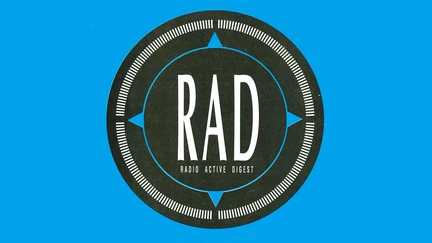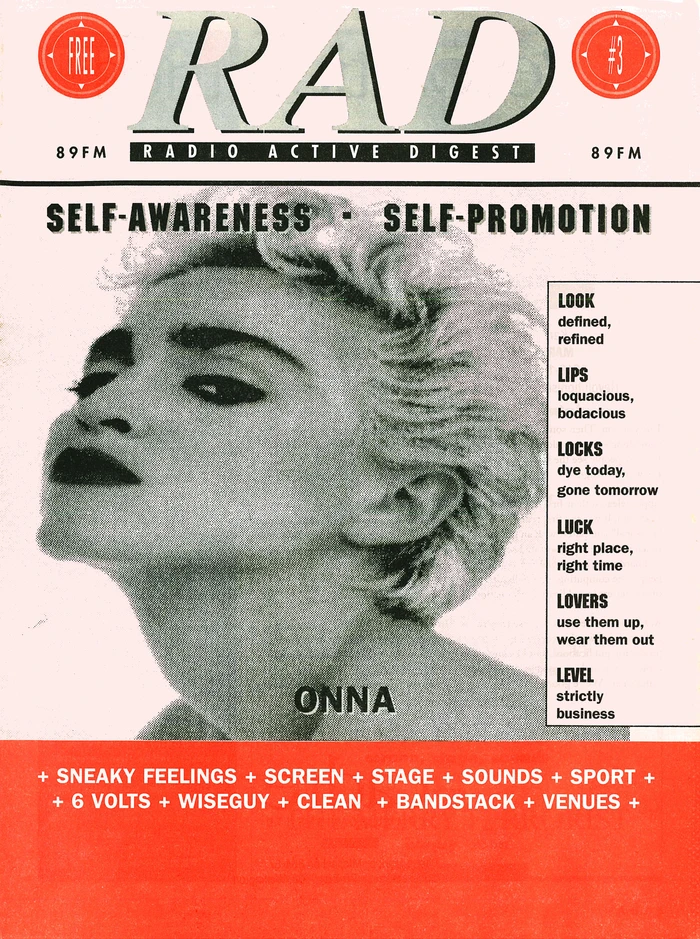RAD: Radio Active Digest now on Wellington City Recollect
A 1980s magazine from Wellington’s pioneering alternative radio station is now available to read on Wellington City Recollect.

During the 1976 ‘Winter Festival’ at Victoria University, an advertisement was printed in the Students Association magazine Salient inviting anyone interested starting a ‘radio club’ to attend a meeting. With a play on words that highlighted the nuclear issues prominent at the time, Radio Active was born. It initially started as a closed-circuit radio station piping music to speakers dotted around the Students' Association building. However, in August 1977 using a string of temporary broadcasting licenses, the fledgling alternative radio station took to the airways on 1260 KHz using a second-hand 100 watt AM transmitter. Five years later, a new era began when ‘Active’ was allocated a frequency at 89 MHz and became the first radio station in Wellington (and only the second in New Zealand) to broadcast in FM stereo. Until that point, though FM radios were available in limited numbers (often as cassette-radio players brought back from overseas as ‘duty free’), the only thing that could be heard on the band was the two-way radio chatter of local taxi firms. Through the 1980s the station developed a cult following and was often the way that people discovered the new sounds of the decade such as ‘alternative', indie, hip hop and techno.

A Radio Active advertisement from Wellington City Magazine, October 1985
In the late 1980s around the same time that the station was finally granted a license to broadcast 24/7 (previously the station was required to close down overnight and over the Christmas holiday period), Mark Cubey and Michael Lockhart decided to start a magazine to test their fledging publishing skills and help promote the station. It was to be called RAD (aka Radio Active Digest). Both founders were Active alumni; Cubey had begun the Uncut Funk Show in 1982, later to morph into the Wednesday Night Jam making it one of the longest running hip-hop radio shows in the world. Lockhart was co-host of The Sound of Cooking show along with Jim Scott. The magazine was produced by their desktop publishing company, Cadre Communications and became a win-win deal for both entities; Radio Active would receive a quality promotional vehicle while selling advertising to cover the printing bill (with an opportunity to cross-sell on-air radio advertising to the same customers). Meanwhile, the Cadre duo and other contributors worked pro bono to have a fun time creating a magazine which enabled them to develop their commercial digital graphics skills while testing their new Macintosh SE desktop computers to the limit. In its later stages the magazine also benefitted from the design input of Simon Coley and the editorial skills of Ania Glowacz who also hosted Active’s Wild Wild Rock Show.
Printed as a ‘freebie’ every two months from December 1988, the magazine gave a run-down of the radio station’s activities, listings & reviews of local gigs, events and record releases as well as an insight into Wellington's alternative youth culture just as the members of Generation X were coming of age. It was also a helpful guide to find out what was worth seeing and when to see it at a time when the World Wide Web had yet to be invented. However, the work involved in producing the magazine was taking too much time for Cubey and Lockhart who realised they needed to focus on the increasing amount of commercial work that Cadre was generating. Glowacz who was also a Cadre employee, continued editing and producing the magazine until its final issue in May 1990. Shortly after, a new magazine called Emit began publishing that closely followed the design and theme of RAD but which sought a wider audience by promoting itself simply as “a Wellington magazine”. Produced by Insight Communications and edited by Jim Scott, though editorially successful, the magazine struggled to become viable during the economic recession of the late 1980s and it ceased publishing after only three issues. The following year Scott would team-up with Cubey and Lockhart to create Scope magazine, also digitised on Recollect.
